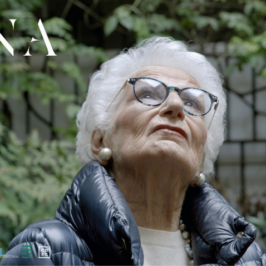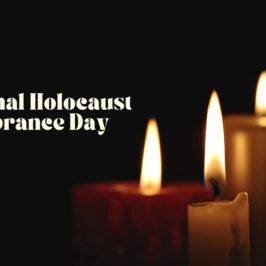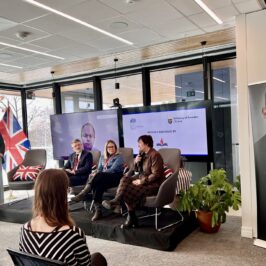By Andrew Duffy original article published by the Ottawa Citizen on September 8.
CEO Andrea Freedman said it is the third time the monument has been desecrated by photographers since it opened in 2017
The Jewish Federation of Ottawa has denounced a recent fashion shoot staged at the National Holocaust Monument as “terribly offensive,” and called for improved Holocaust education for young Canadians.
Federation CEO Andrea Freedman said it is the third time the monument has been desecrated by fashion photographers since it opened in 2017.
“It is mind-bogglingly inappropriate to pose for bathing suit photos and videos at a site where people go to mourn, honour, and remember those who were murdered in the Holocaust,” Freedman said.The federation contacted the Ottawa-based photographer who posted YouTube videos of the bathing suit fashion shoot. Freedman said the photographer apologized and immediately removed the offending material so the federation has decided against publicly identifying the individual.Earlier this year, in April, Ottawa photographer Michael Dupe posted four photos to his Instagram account of a young woman posed against the concrete walls of the monument. Its sharp angles and shadows were used for dramatic effect.
At the time, Dupe defended his work, saying none of his photos included plaques or other features that would identify the location as a Holocaust monument. “If taking a photo with grey walls as a backdrop is a crime, lock me up,” he said on social media.In August 2018, Montreal clothing designer Michèle Beaudoin posted pictures to Instagram of a woman in a revealing dress at the monument. The photos were later deleted.Freedman said the National Holocaust Monument is clearly marked and its sombre purpose should be well understood by now. “People cannot claim ignorance,” she said.For Freedman, the repeated inappropriate use of the monument speaks to the need for improved Holocaust education. “I think what it points to is a lack of understanding about the Holocaust in our society,” she said.
A survey of 1,100 Canadians, conducted in September 2018 for the Azrieli Foundation, found that half of Canadians could not name a single Nazi concentration camp, such as Auschwitz, Treblinka or Belzec. Fewer than half (46 per cent) could correctly identify that six million Jews were slaughtered during the Holocaust.
Freedman said a standardized Holocaust education curriculum is urgently required in Canadian schools to counter both that historical amnesia and the rising tide of antisemitism. B’Nai Brith Canada reported a record number of antisemitic incidents in the country last year.
Mina Cohn, chair of the Ottawa-based Centre for Holocaust Education and Scholarship, said the organization supports the call for a strengthened Holocaust curriculum.
In Ontario, she said, public high schools offer Holocaust education in Grade 10 as part of a unit on the Second World War, but the amount of time dedicated to the subject differs between schools.“The Holocaust, at best, is given two lessons, and it all depends on the teacher,” Cohn said Thursday. “Canadians have a very limited knowledge of the Holocaust because it’s not taught properly in the schools….We feel Canadians have a moral obligation to remember the past.”Cohn said a better understanding of the history of antisemitism can promote empathy and help students think critically about the root causes of racism and intolerance.The Holocaust involved the systematic, state-sponsored murder of six million Jews by the Nazis, who believed Jews were inferior to Germans and represented a threat to Aryan racial purity. Other victims of the Holocaust included Roma, homosexuals and the physically and mentally disabled.
The drive to build a national Holocaust monument in Ottawa was spearheaded in 2007 by Laura Grosman, then an 18-year-old student at the University of Ottawa. She was appalled by Canada’s lack of recognition for Holocaust victims, and lobbied federal politicians to enact legislation to build one.A private member’s bill launched by Conservative Tim Uppal, a Sikh from Edmonton, became law in March 2011, and three years later, a design was approved. The monument features six triangular concrete structures that create the points of a star, along with large, monochromatic photos of Holocaust sites.






